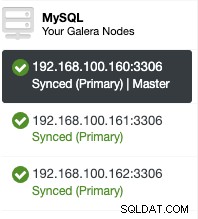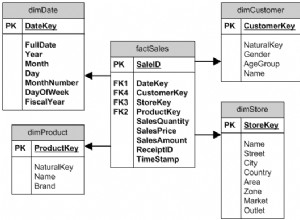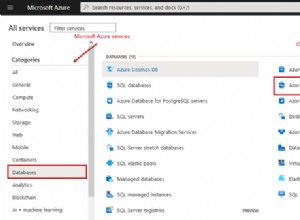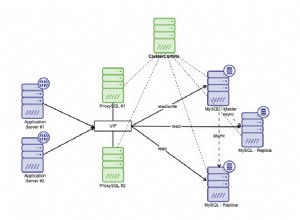Prawdopodobnie najprostszą i najczęstszą implementacją drzewa SQL jest tabela samoodnosząca się, np.:
create table tree(
id int primary key,
parent int references tree(id));
insert into tree values
(1, null),
(2, 1),
(3, 1),
(4, 2),
(5, 4);
Możesz chodzić po drzewie od góry do dołu za pomocą rekurencyjnego zapytania w ten sposób:
with recursive top_down as (
select id, parent, array[id] as path
from tree
where parent is null
union all
select t.id, t.parent, path || t.id
from tree t
join top_down r on t.parent = r.id
)
select *
from top_down;
id | parent | path
----+--------+-----------
1 | | {1}
2 | 1 | {1,2}
3 | 1 | {1,3}
4 | 2 | {1,2,4}
5 | 4 | {1,2,4,5}
(5 rows)
Zobacz też tę odpowiedź dla przykładu oddolnego.
Uczciwość
Nie możesz usunąć węzła, który jest rodzicem innego. Klucz obcy zapobiega podziałowi drzewa na oddzielne części:
delete from tree
where id = 2;
ERROR: update or delete on table "tree" violates foreign key constraint "tree_parent_fkey" on table "tree"
DETAIL: Key (id)=(2) is still referenced from table "tree".
Opcjonalnie możesz upewnić się, że drzewo ma tylko jeden korzeń, używając częściowego unikalnego indeksu:
create unique index tree_one_root_idx on tree ((parent is null)) where parent is null;
insert into tree
values(6, null);
ERROR: duplicate key value violates unique constraint "tree_one_root_idx"
DETAIL: Key ((parent IS NULL))=(t) already exists.
Cykle
Możesz wyeliminować możliwość wprowadzania cykli za pomocą wyzwalacza. Funkcja sprawdza, czy jednym z przodków wstawionego lub zaktualizowanego węzła może być sam węzeł:
create or replace function before_insert_or_update_on_tree()
returns trigger language plpgsql as $$
declare rec record;
begin
if exists(
with recursive bottom_up as (
select new.id, new.parent, array[]::int[] as path, false as cycle
union all
select r.id, t.parent, path || t.id, new.id = any(path)
from tree t
join bottom_up r on r.parent = t.id and not cycle
)
select *
from bottom_up
where cycle or (id = parent))
then raise exception 'Cycle detected on node %.', new.id;
end if;
return new;
end $$;
create trigger before_insert_or_update_on_tree
before insert or update on tree
for each row execute procedure before_insert_or_update_on_tree();
Sprawdź:
insert into tree values (6, 7), (7, 6);
ERROR: Cycle detected on node 7.
update tree
set parent = 4
where id = 2;
ERROR: Cycle detected on node 2.




